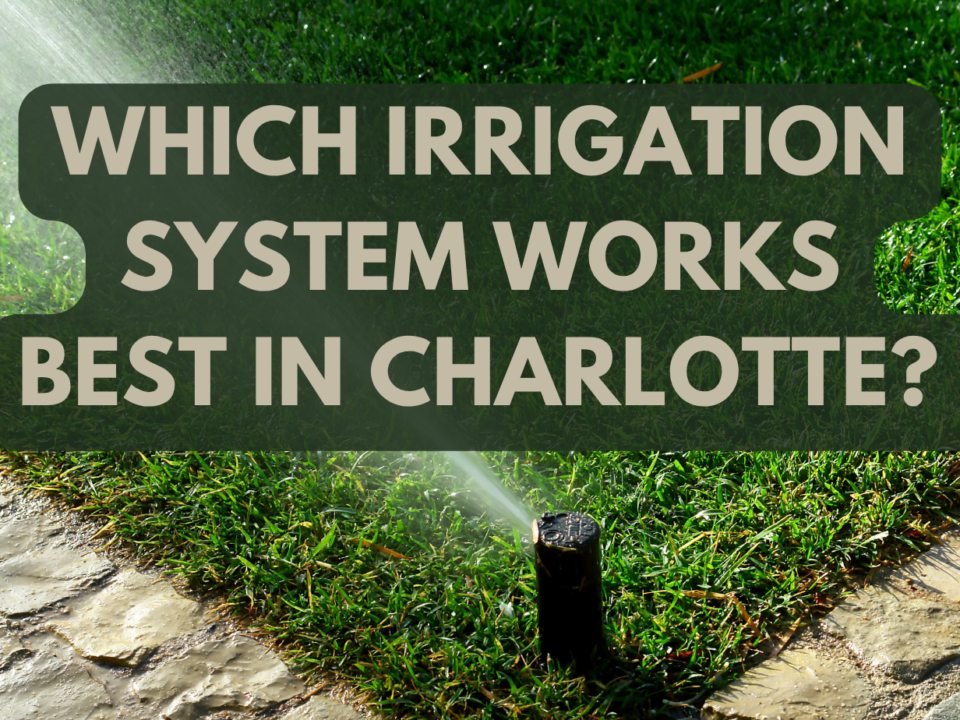10 Easiest Native Plants to Grow in Charlotte’s Climate

Backyard Privacy Ideas for Charlotte Homes
November 15, 2025
Best Low-Maintenance Native Plants for Charlotte Homes
If you’ve ever planted something beautiful only to see it shrivel in Charlotte’s summer heat or collapse after heavy rain, you can rest easy tonight knowing you’re not the only person in the Queen City who is experiencing this! The Piedmont’s mix of humid summers, winter swings, and dense red clay soil can be tough on imported plants. Native plants, having evolved here, are well-suited to Charlotte’s climate, rainfall, and soil. Once established, they typically require less water, fewer chemicals, and less maintenance than traditional ornamentals.
Charlotte is in USDA zone 7b–8a, offering a variety of low-maintenance native plants that support local wildlife more effectively than non-natives. Here’s a list of the 10 top native plants for a beautiful, easy-care yard.
1. Eastern Redbud
Few trees herald spring as vividly as the Eastern redbud. Its magenta-pink flowers bloom before the leaves, brightening bare branches right when winter feels like it’s ending. Its compact size, typically around 20–30 feet, makes it perfect for Charlotte’s suburban and urban spaces. Redbuds thrive in clay soil, summer heat, and part shade, making them one of the easiest native trees to grow.
2. American Holly
If you’re looking for a decorative, year-round screen, American holly is an excellent choice. Its shiny evergreen leaves and vibrant red berries provide structure, color, and attract wildlife all in one. Even in tough conditions like shade, poor soil, or extended dry spells, American holly generally thrives. To ensure abundant berries for winter interest, plant both a male and a female holly close together.

3. Virginia Sweetspire
Virginia sweetspire might be the most versatile shrub on this list. It grows in full sun or shade and tolerates both wet and average soils, an ideal trait for Charlotte’s heavy clay and occasional drainage issues. Its arching stems produce fragrant white flower spikes in late spring, followed by spectacular red-to-burgundy fall color. Once you plant it, there’s very little to do other than enjoy it.
4. Oakleaf Hydrangea
Many people assume all hydrangeas are high maintenance, but oakleaf hydrangea is a Southeastern native that’s perfectly at home here. It offers giant white flower clusters in early summer, deep red foliage in fall, and beautiful peeling bark in winter.
Because it prefers morning sun and afternoon shade, it’s great for foundation plantings, woodland edges, or spots where you want structure without constant pruning.
5. Red Chokeberry
Red chokeberry brings something to the table in every season: white spring flowers, glossy green foliage in summer, rich fall color, and clusters of red berries that persist into winter. Birds love it, and it fills in areas where many plants struggle, particularly moist, low-lying corners of the yard. Once established, chokeberry is extremely resilient, even if you occasionally forget to water it.

6. Orange Coneflower
Sometimes called black-eyed Susan’s close cousin, orange coneflower is one of the most reliable perennials for hot, sunny Charlotte yards. Its golden daisies light up garden beds from mid-summer into fall, attracting a parade of pollinators along the way. It handles clay soil, heat, humidity, and full sun with almost no fuss. A quick trim in late winter is usually all it needs.
7. Carolina Phlox
Carolina phlox delivers soft flower clusters that draw butterflies and hummingbirds, but without the mildew problems common in many non-native phlox varieties.
Plant it where it gets decent sun and some airflow, and it becomes one of the most dependable perennials in a Charlotte landscape. Over time, it forms small clumps that can be divided and moved around your garden without much effort.
8. Slender Mountain-Mint
If you want a plant that practically vibrates with life in summer, slender mountain-mint is a must-try. Its fine foliage and delicate white flowers may look understated, but pollinators flock to it in huge numbers. It’s ideal for sunny borders, meadows, and garden edges, and once it’s in the ground, it thrives on neglect. Just cut it back in late winter, and it’s ready for another year.

9. Green-and-Gold
Finding a low, reliable groundcover for shade can be tricky, but green-and-gold is a native gem. It forms a soft carpet of foliage, topped with cheerful yellow flowers in spring, and thrives under trees and in woodland borders. Because it spreads slowly and stays low, it never feels invasive or messy.
For areas where turf won’t grow or where you don’t want to mow, this plant is a perfect solution.
10. Christmas Fern
Christmas fern is one of the few plants that thrives in the dry, root-filled shade beneath mature trees. Its glossy evergreen fronds stay attractive year-round, giving structure to shady corners that often feel bare or forgotten. Other than removing old fronds in late winter, Christmas fern requires almost no maintenance, making it a true plant-and-forget option.
Designing With Natives in Charlotte
Native plants make the biggest impact when they’re arranged in intentional, layered plantings rather than scattered around the yard. When designed well, they fill space quickly, reduce maintenance, and thrive naturally in Charlotte’s climate.
Here are five simple ways to use natives more effectively in your landscape:
- Group plants in clusters instead of singles to create fuller, more natural-looking beds.
- Pair sun-loving natives (like coneflower and mountain-mint) to build vibrant pollinator areas.
- Use shade-tolerant natives (like Christmas fern and green-and-gold) under mature trees where grass fails.
- Add a small native tree, such as Eastern redbud, to provide height and seasonal color.
- Mix shrubs like Virginia sweetspire or spicebush into borders for structure and year-round interest.
The Low-Maintenance Path Forward
Native plants aren’t just a trend; they’re one of the most reliable ways to create a healthier, more sustainable landscape that naturally thrives in Charlotte’s climate. When you combine native plantings with smart soil care and efficient irrigation, you’ll enjoy a yard that’s easier to maintain, more resilient, and beautiful year-round.
If you’d like help designing or installing a low-maintenance native landscape, reach out to Vision Green. Our team can create a plan custom to your home and budget.




